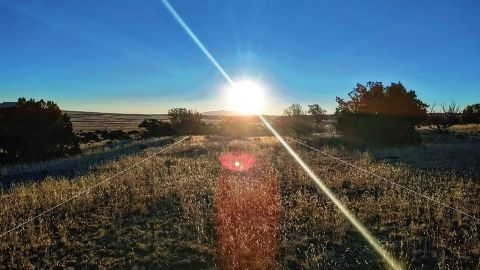Lasers reveal 1,000-year-old Indigenous road near Chaco Canyon that aligns with the winter solstice
By Tom Metcalfe published 34 minutes ago
Researchers think the Indigenous roads were more about cosmology than traffic.

A sunrise over a grassy field with two white lines indicating a road drawn on the image
The winter solstice sunrise over Mount Taylor, seen from the center of the northern nearly-parallel road at the Gasco site, which is shown by the two white lines. (Image credit: Weiner et al. Antiquity Publications Ltd.)
Lasers have revealed a 1,000-year-old sacred road near Chaco Canyon in New Mexico. Researchers say the road was part of an Indigenous ritual landscape, serving as a path between natural springs and aligning with the sunrise on the winter solstice, a new study finds.
Until now, researchers thought the road at the Gasco site may have linked Indigenous settlements in the area. But new research shows that not only is a sacred road there much longer than they thought, it also has a previously unknown road running almost parallel to it. In addition, the two roads align with the winter solstice sunrise over Mount Taylor, which remains a sacred mountain among Indigenous peoples today, the researchers wrote in the study.
The discoveries at Gasco, west of Albuquerque and about 50 miles (80 kilometers) south of Chaco Canyon, indicate that the roads made by this Indigenous culture were not just for regular traffic but were integral to their system of cosmological beliefs, the researchers wrote.
"One of the really exciting things about the work we've been doing with Chacoan roads is that they're forcing us to reconceptualize what a road might be, what a road might mean," study lead author Robert Weiner, an archaeologist at Dartmouth College, told Live Science.
More:
https://www.livescience.com/archaeology/lasers-reveal-1-000-year-old-indigenous-road-near-chaco-canyon-that-aligns-with-the-winter-solstice
